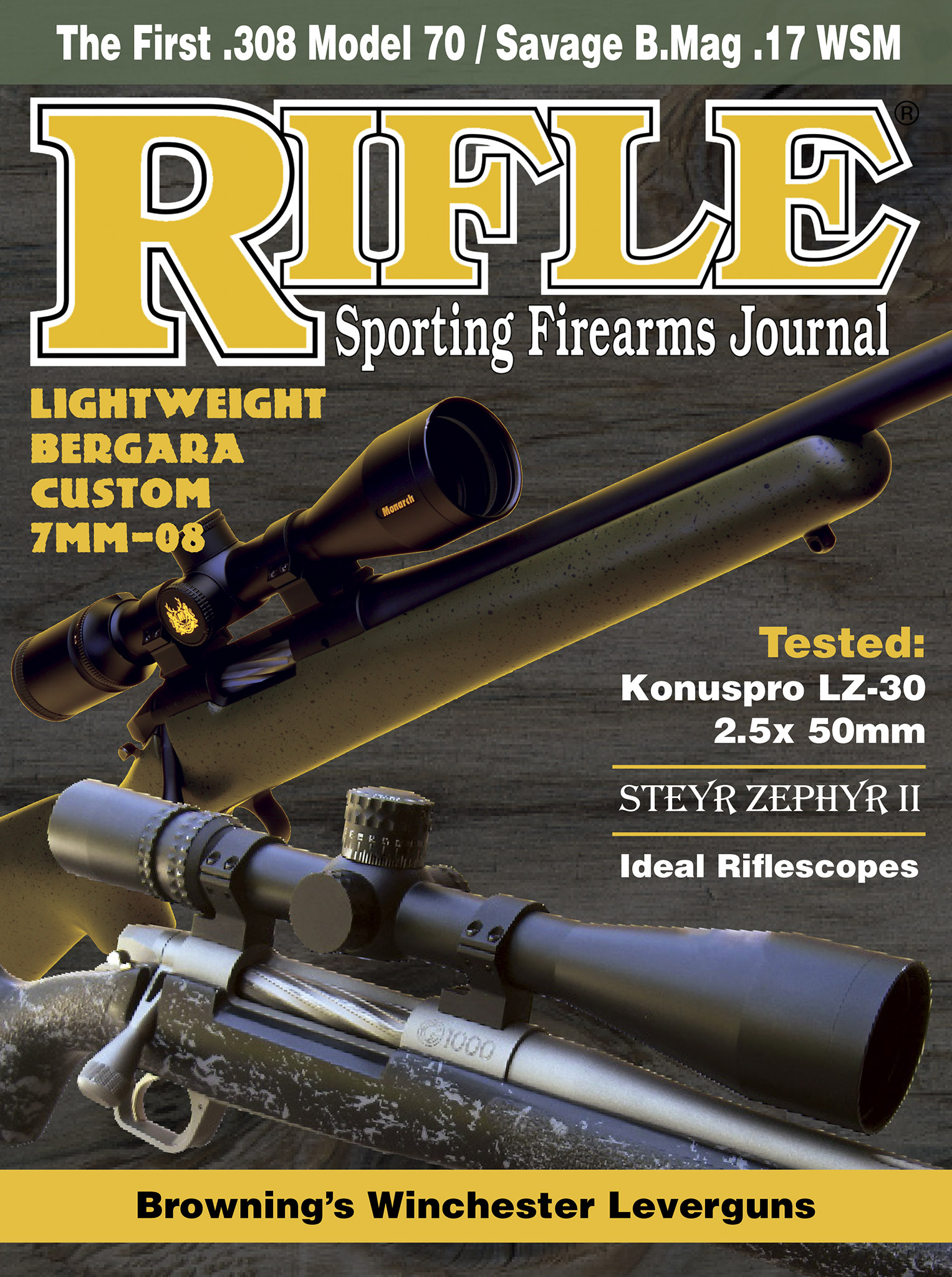Savage B.Mag Beavertail
Shooting a Heavy-Barreled .17 WSM
feature By: Stan Trzoniec | November, 18
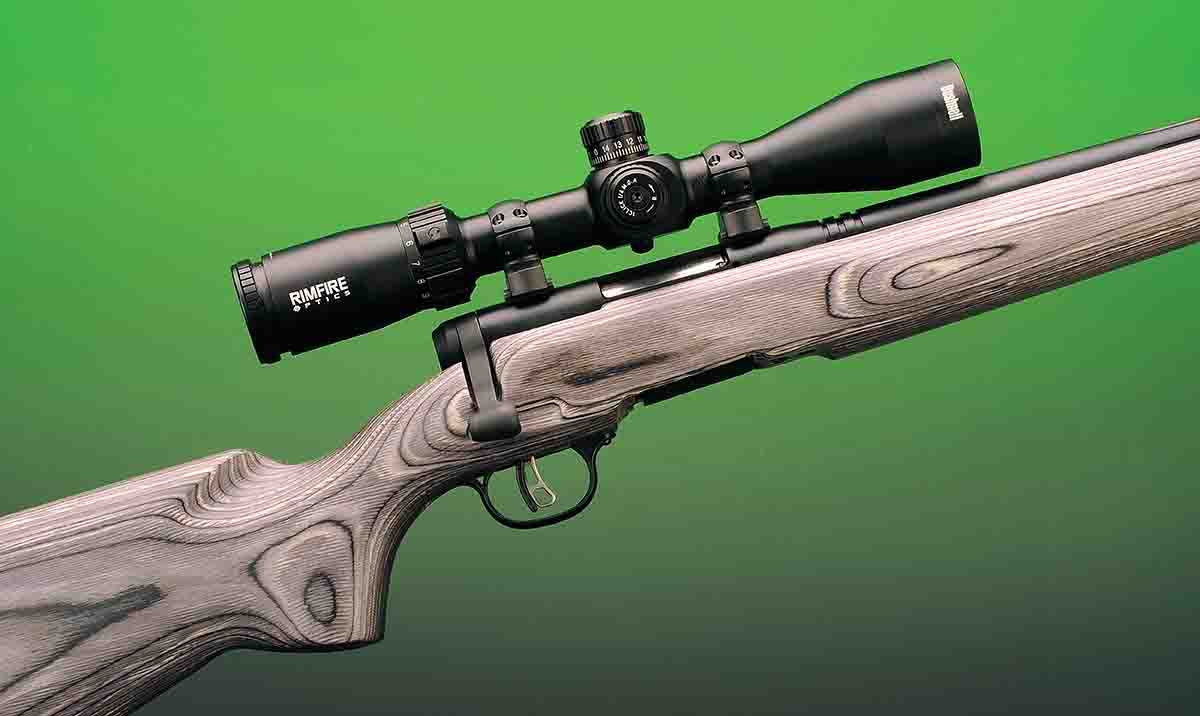
While the rifle was in development months before the introduction of the .17 WSM, in 2013 Savage introduced a rifle series called the B.Mag. Rather than using an established in-house action, Savage built this new entry from the ground up. At the onset of its introduction, only a synthetic-stocked model was available, though due to consumer demand, the company now offers several models with both synthetic and laminated hardwood stocks to include classic, thumbhole and heavy-barrel variations with the AccuTrigger and standard eight-round magazines.
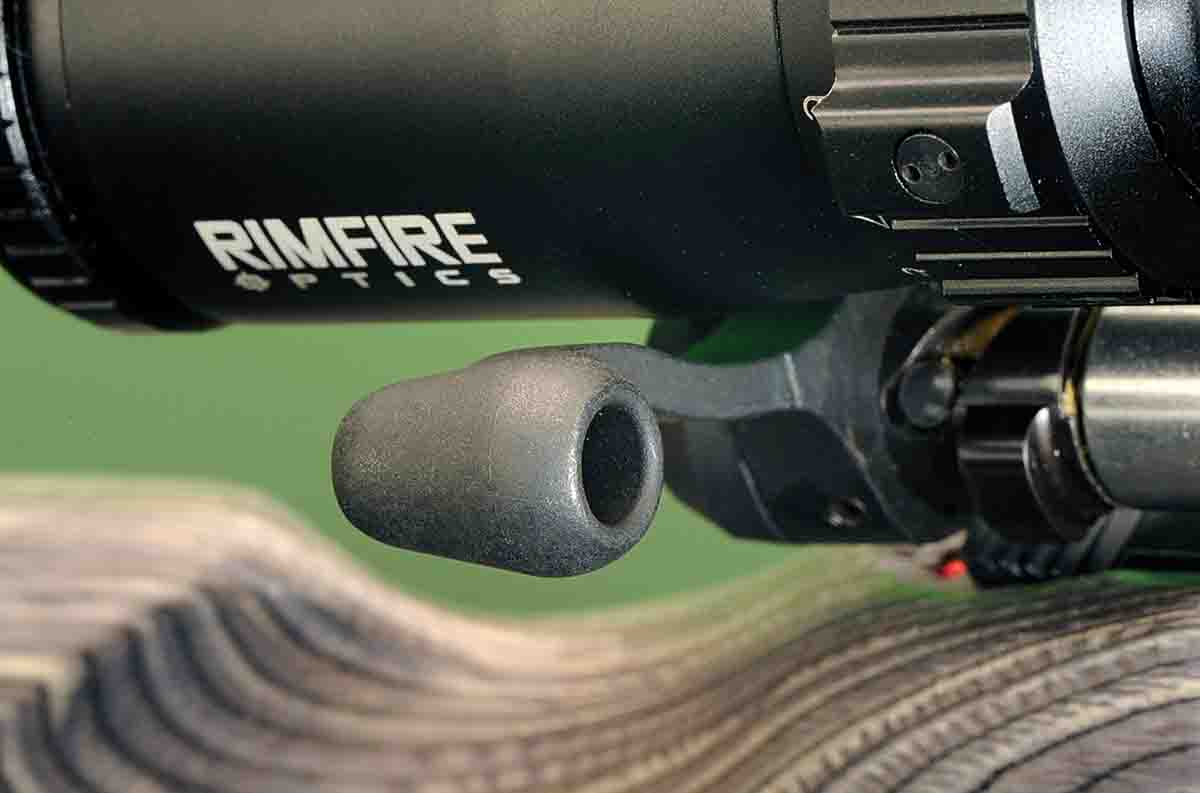
The B.Mag rifle was the first Savage rifle chambered for the .17 WSM following the takeover of Savage by ATK (now Vista). Most of the major players in the industry now offer a rifle for the .17 WSM. My example is the Beavertail version with features desired by both casual and serious small- game shooters.
For Savage aficionados, the bolt within the action is designed to lock at the rear with opposing dual lugs, and it cocks on closing. For first-time or even veteran shooters, this results in a new feel to the action, as closing the bolt requires more pressure than most shooters are used to on a conventional-type rifle that cocks on opening. The body of the bolt has been left in a natural state and measures 3.698 inches in length, while the entire length over the locking lugs and shroud is 5.109 inches. Along most of its length, the bolt diameter is .635 inch, interrupted only by a gas relief hole with a large cutout underneath to gain access to the firing pin and cocking assembly.
Up front, there is a small diameter reduction to .573 inch, which I assume is to allow easy entry into the chamber while leaving space for the mounting of the extractor located at about 10 o’clock on the bolt face.
The firing pin is round, something again we are not accustomed to seeing on a rimfire rifle that is usually equipped with a square or rectangular firing pin. Twin locking lugs are located on the rear part of the bolt with the shroud and the steel bolt handle and knob. The bolt handle has a unique “kink” to it to afford more clearance when the action is closed. The bolt knob has been hollowed out to save weight. In all honesty, it should be made a bit larger and longer to afford more purchase considering the extra effort and force needed when closing the bolt. Behind the shroud is a two-position tang safety; slide it back for “safe” and forward to fire. The “fire” position reveals a red dot signifying the rifle is ready to be shot.
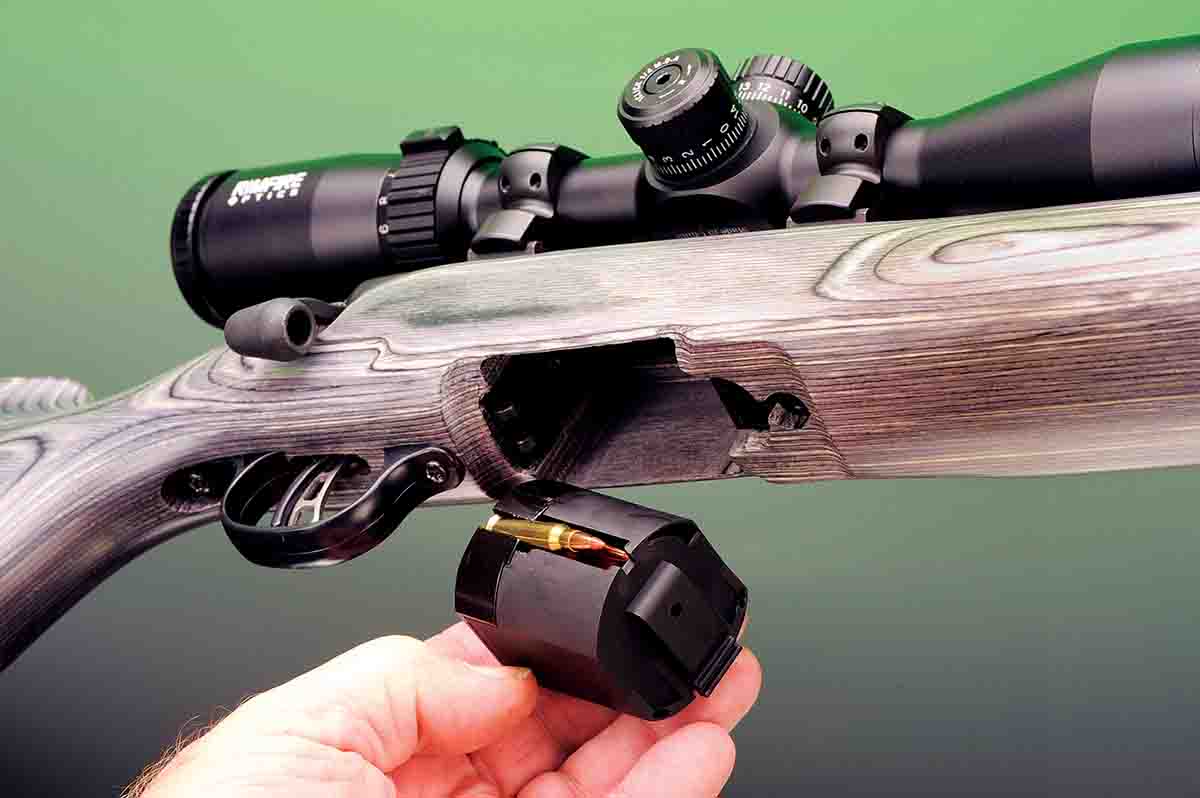
The receiver is tubular and features a gas relief port on the left side, and another on the right just in front of the ejection port. At the front of the receiver, engineers conceived a way to taper it down so it meets the barrel almost in a seamless fashion. A streamlined bolt release is on the left side, and pushing it inward at the nub allows the bolt to follow rearward and out of the rifle. The receiver is finished to match the barrel, making it a very handsome package for the small-game hunter.
The barrel is 22 inches in length and, depending on the model, can be either a sporter or heavy barrel. My sample had the heavy barrel that measured .800 inch at the nicely crowned muzzle. This rimfire series uses what Savage calls its “thread-in” barrel system. In production, the barrel is inserted into the receiver then secured in place while using the same method of headspacing as on other other Savage rifles. While the sporter barrel is plain and blued, the heavy or “target” barrel has flutes along most of its length.
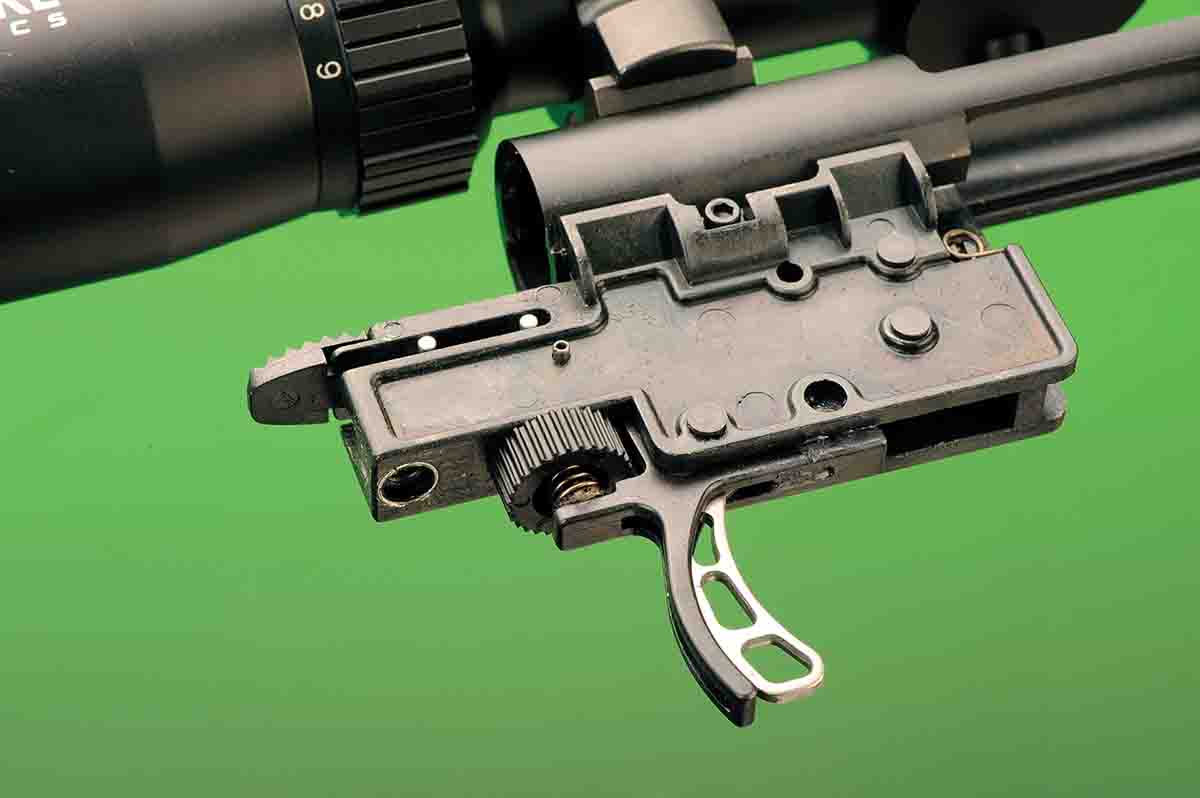
Included with this model is an eight-round rotary, polymer magazine that is easily loaded and feeds cartridges smoothly into the chamber. The rear of the magazine fits precisely into a dovetail within the magazine well, and the front flexible latch secures it in the stock. One small movement of the magazine lock to the rear allows the magazine to fall into your hand for recharging or replacement. If you get into unusual weather conditions and need to clean the magazine thoroughly, there are two retaining screws at the end of the magazine. Remove them to disassemble the magazine with a small Philips screwdriver. The magazine well and trigger guard are made from the same material, with metal guide rails to the rear of the assembly for smoother insertion of the magazine and to resist wear and tear on this part of the rifle.
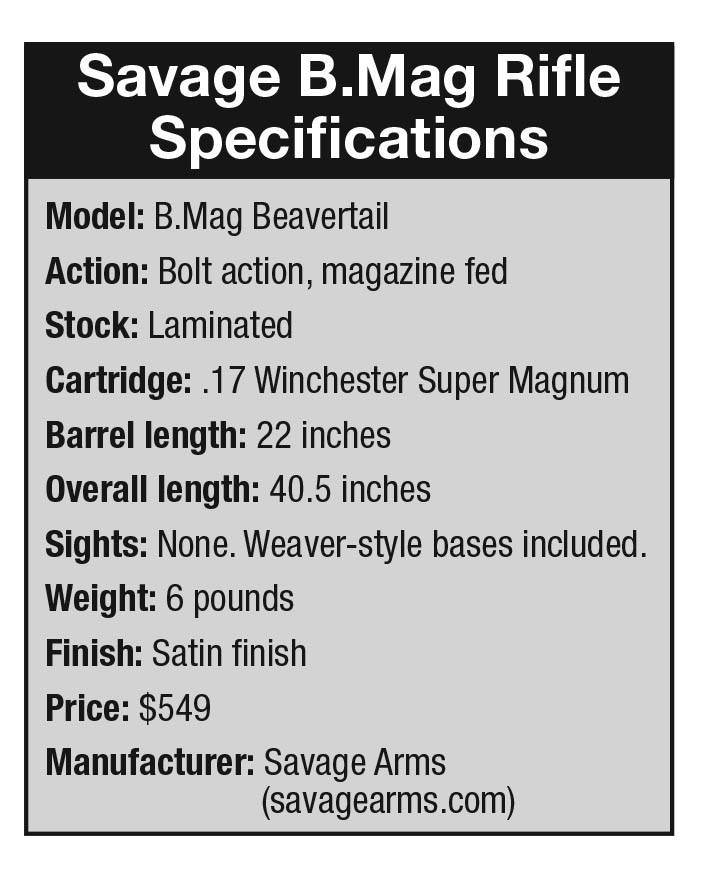
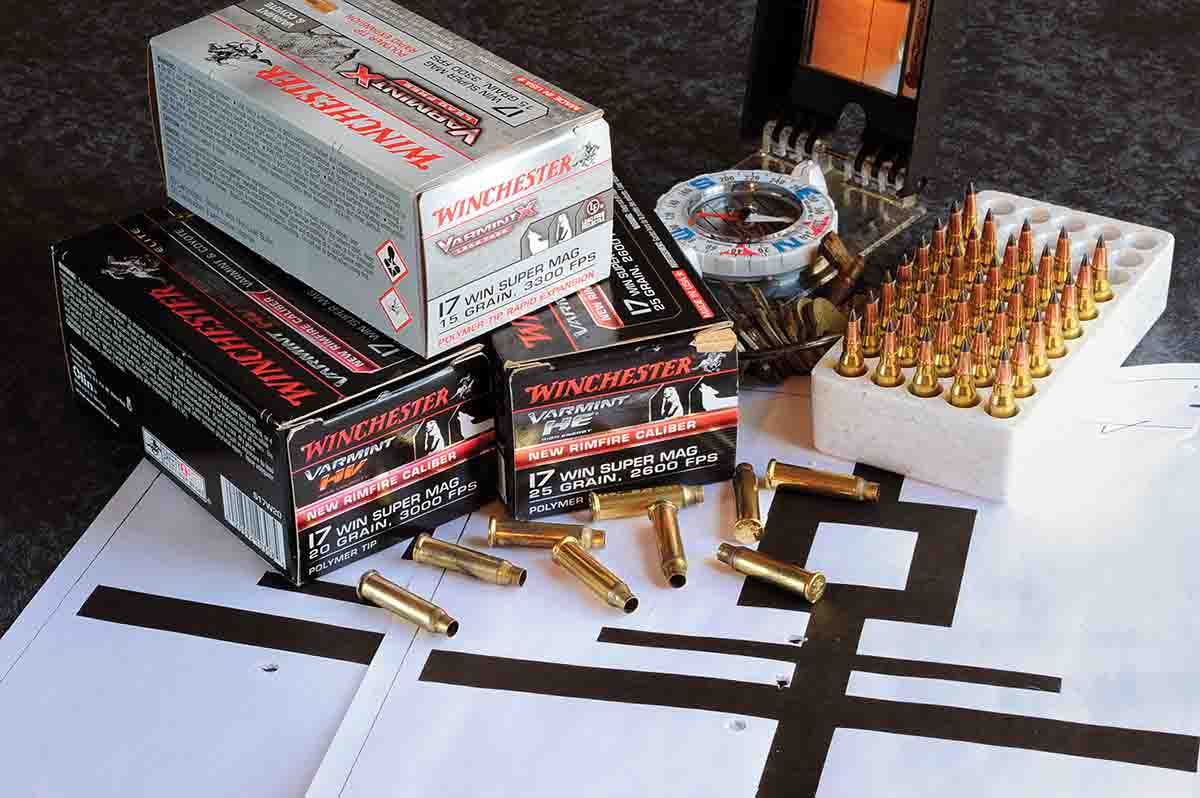
In looking at its new catalog, Savage seems to have hit the mark with the B.Mag series, as the various models are evenly divided between synthetic or laminated stocks, and there are options for sporter or heavy barrels in stainless or blued steel. The original synthetic-stocked rifle is still available with a sporter-weight barrel and a weight of 4 pounds. Other synthetic models include a stainless or blue heavy barrel at 6 pounds with the barrel free floated in the stock. Laminated stocks appeal to many shooters, so with this in mind Savage includes a B.Mag Target (thumbhole stock) with a stainless heavy barrel, a B.Mag Sporter (classic stock, sporter barrel) and the B.Mag Beavertail with a laminated stock featuring a high comb and wide forearm made by Boyds.
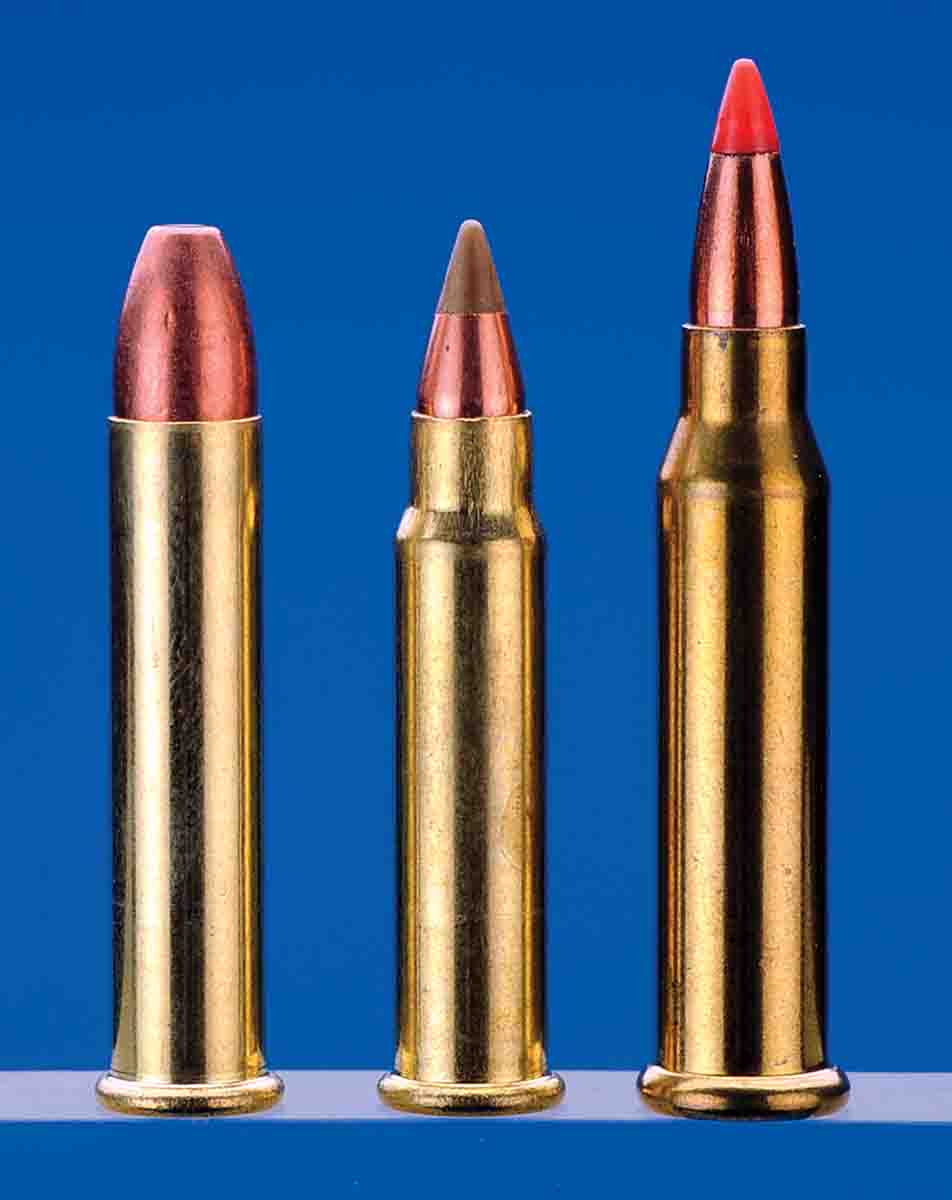
For my way of hunting, this model fits my needs perfectly. The wide forearm measures a tick over 2 inches in width and includes dual sling swivel studs – one for a sling, one for a bipod. At the magazine well, the stock tapers inward back to the wrist and down to the pistol grip. From there, the stock is a modified Monte Carlo-type design for easy scope use, but it has no cheekpiece. Finishing off the stock is a black spacer and a thin, rubber recoil pad. Length of pull is 14 inches from the trigger face to the butt – a bit long for me, but with summer shirts in lieu of heavier hunting jackets, I can handle that.
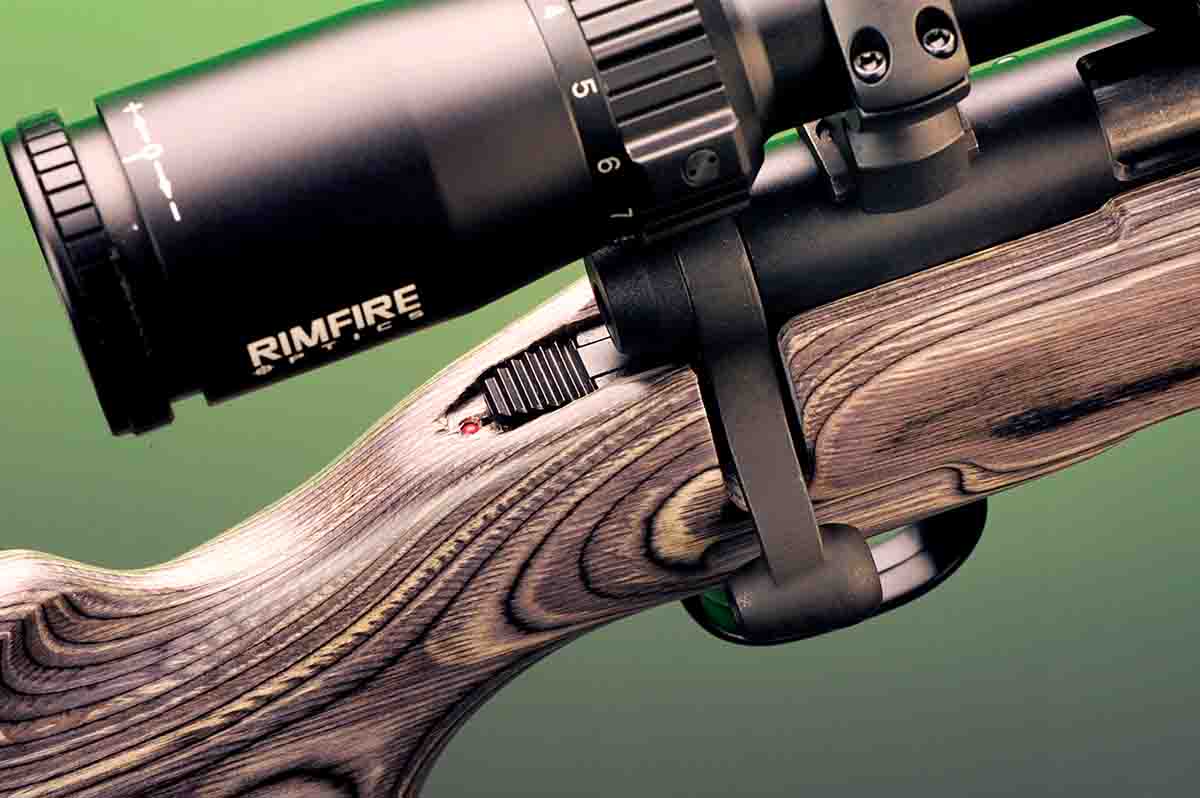
So will the .17 WSM be a viable asset to the varmint-hunting community? For hunters who do not want to handload and like the mystique of a good .17-caliber cartridge, sure. How about those looking for a new cartridge or rifle? Of course. New .17 WSM rifles are being added from Ruger, Volquartsen and others, so the field is getting more opportunistic by the year.
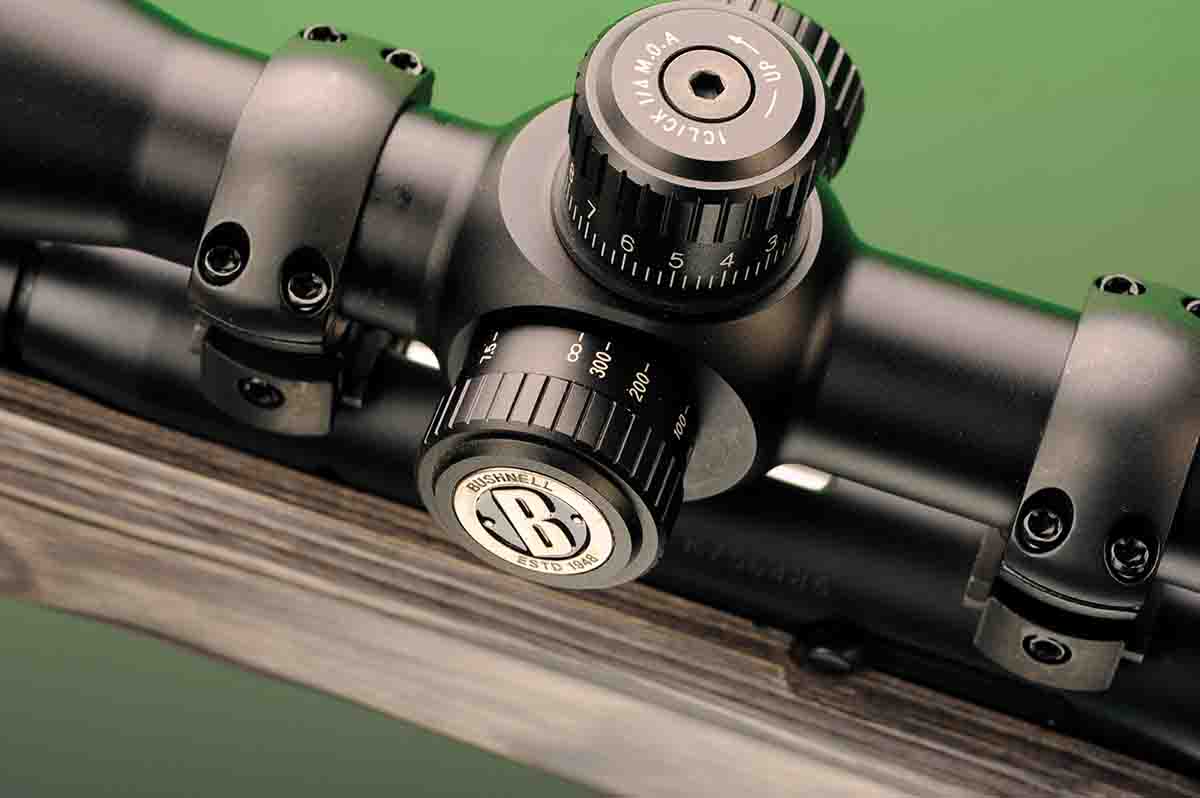
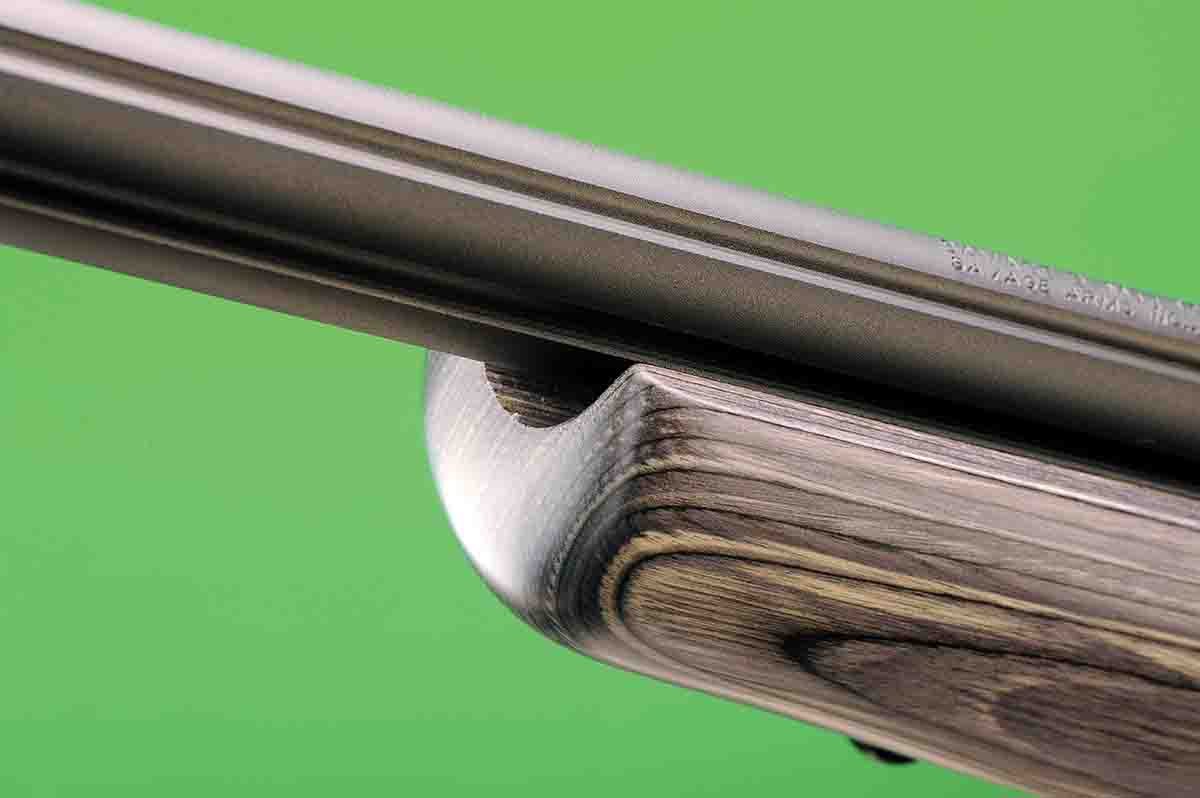
Out on the range, the Savage shot well as noted in the accompanying table. Considering the test rifle had a 22-inch barrel, velocity was only down a bit as compared to factory ballistics, and groups averaged around 1.5 inches at 100 yards. The wind was light on the day the rifle was tested, and those light, .17-caliber bullets shot well. I do expect tighter groups once the barrel gets broken in.
To complete the B.Mag lineup, Savage should consider introducing a higher-grade rifle with a walnut stock, highly polished metal parts and cut checkering – more like the classic series the company had offered in years past. For the sportsman who likes something extra in the appearance of his rifle, this would be a big hit.

Overall, the rifle is reasonably priced, accurate and well made, and I look forward to using it in the field.


